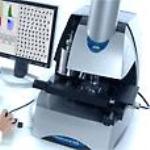The website of Malvern Panalytical has posted a novel application note that explains a process for automating the measurement of the micron scale beads’ shape and size. It is vitally important to control carefully the shape and size of the bead for a broad application range like medical fabrication, chromatography, medical devices, and sensors. The performance of the product is likely to be affected due to the presence of fused or mis-shaped beads.
 Malvern Panalytical morphology G3 automated particle characterization system
Malvern Panalytical morphology G3 automated particle characterization system
Morphologi G3 of Malvern Panalytical has integrated image analysis and microscopy for measuring the intensity, size, and shape of the particles in the 0.5 to 10000 µm range. It confines and stores images of each examined particle. Powerful software implies transformation of data into useful information with few mouse clicks, empowering users to confidently make quick decisions.
The system can be used for determination of monodispersity and quality of micron-sized beads and identification of non-spherical particles also. By size and shape analysis the system has increased the utility of particle characterization data. The automated, user friendly system needs little sample preparation.
The Morphologi G3 particle characterization solution of Mavern can be utilized to perform automated measurements more quickly compared to manual microscopy, without being subjected to the variability of the same operator.
Monodisperse spherical beads are able to bunch in a manner resulting in a well-defined pores network that can be advantageous in sensing applications. For instance, a medical sensing device relies on a protein’s agglomeration to deliver a positive result. In such situations, it will not be possible for the agglomerated protein to pass through the channels. When there is no sample retention and agglomeration there will be a negative result. The pores can be blocked due to the fines present in the packing material and make the device unreliable by retaining smaller particles.